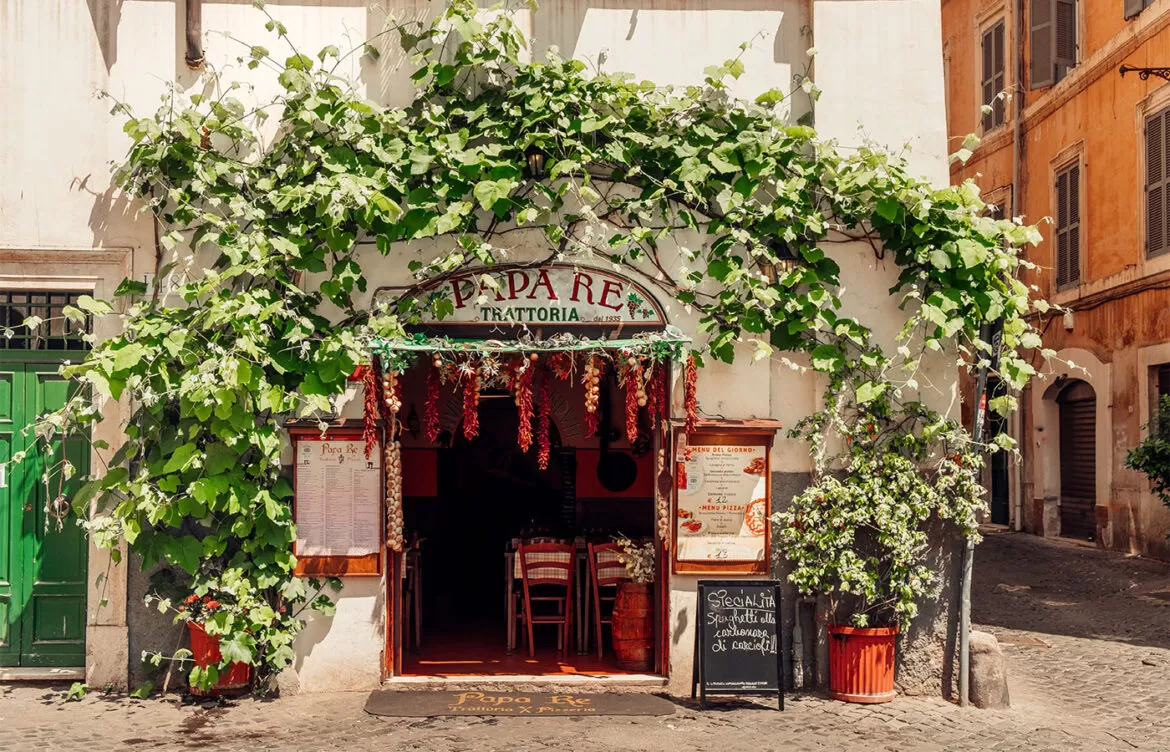From ‘grazie’ to ‘ti ringrazio’, learn to express your gratitude like a native. Here are 29 unique ways to say ‘thank you’ in Italian you probably didn’t know.
There are 9 ways to say ‘please’ in Italian but there is an even more impressive list of ways to ‘thank you’ in Italian that goes well beyond just saying ‘Grazie’. Could you get by without learning these core phrases? Probably, but imagine how it would look if you stopped saying ‘sorry’, ‘please’ and ‘thank you’ in your daily life in English – you’d probably upset a few people.
Learning a language is not just about getting what you want, like ordering food or drink or asking for directions. It’s about communicating with people, connecting with them and building relationships. If you want to connect with Italians and master this beautiful language, learning to say thank you in Italian, as well as other expressions of politeness, is essential.
In this guide, we’ll take a detailed look at the most common you can say thank you in Italian, including lots of examples and important cultural notes. We’ll also take a look at how to reply when someone says thank you to you!
Cominciamo! (Let’s get started)
Grazie – The easiest way to say ‘thank you’ in Italian
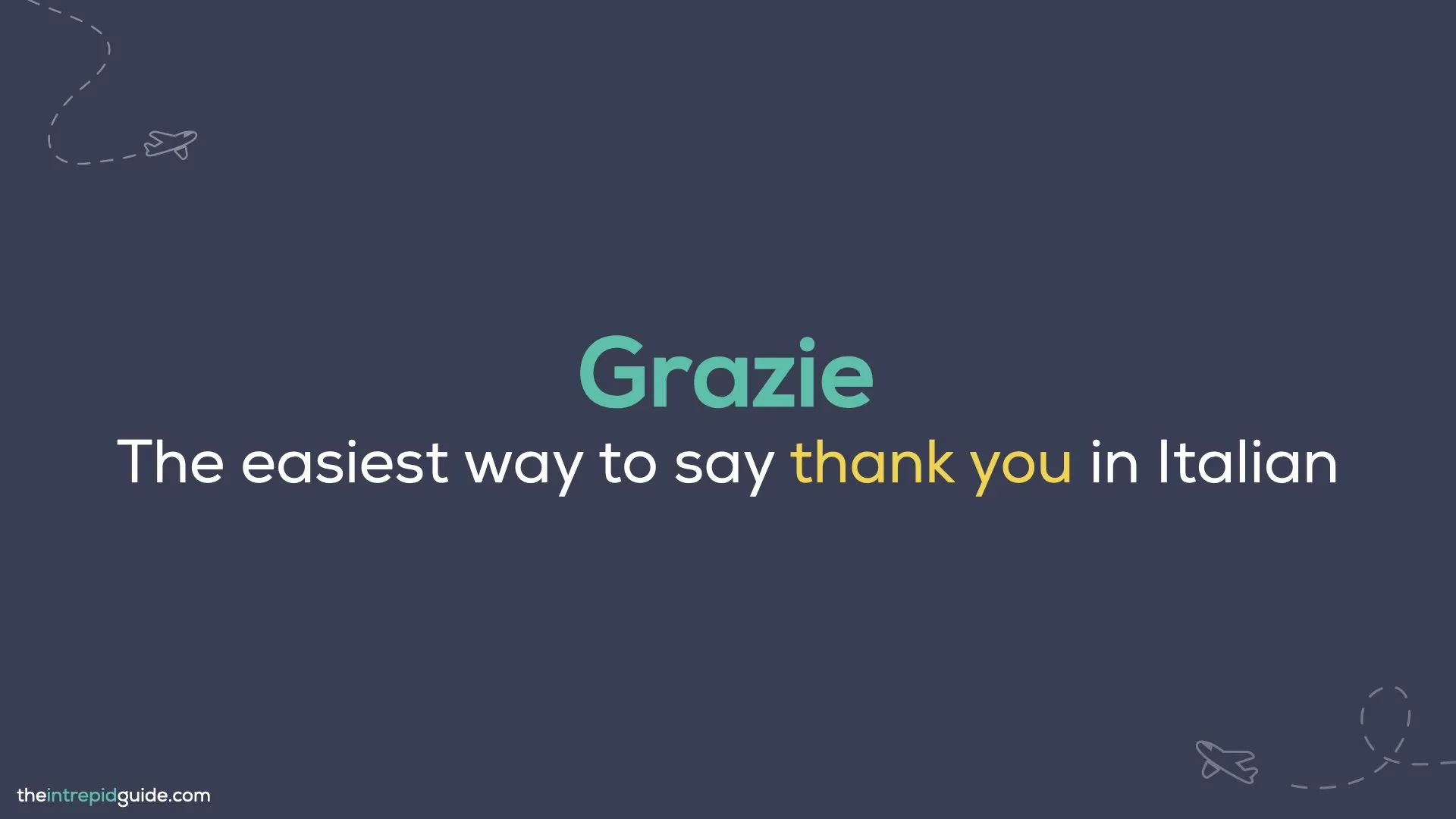 Despite the title of this article, I’d like to cover all the basics and start with the easiest and most common way of saying thank you in Italian: grazie (pronounced GRAHT-see-eh). This word is so common that people who have never learned any Italian recognize it, and it is one of the first things you learn when beginning to learn Italian.
Despite the title of this article, I’d like to cover all the basics and start with the easiest and most common way of saying thank you in Italian: grazie (pronounced GRAHT-see-eh). This word is so common that people who have never learned any Italian recognize it, and it is one of the first things you learn when beginning to learn Italian.
Saying grazie is the same as saying ‘thank you’ in English, and it can be used in practically any formal or informal situation, no matter who you are talking to: a family member, a barista at a coffee shop, an elderly stranger, or your boss. It is used in the same form whether you are talking to a man or a woman, one person or many people. Grazie is the most common reply you’ll hear in most everyday interactions.
For example:
Ecco il tuo caffè. — Grazie.
Here is your coffee. — Thank you.
Another example is:
Ti porto da bere? — Sì, grazie.
Can I get you a drink? — Yes, please!
Attenzione! Be careful! Many foreigners and beginner students of Italian tend to confuse grazie with grazia. While these are two forms of the same word, only one of them can be used to say thank you in Italian.
‘Grazia’ means ‘grace’ in Italian, and ‘grazie’ is the plural form of ‘grazia’. At some point in history, the plural form also became the standard polite expression to express gratitude. Even if you are grateful for one single thing, you can only express it with grazie, not grazia.
‘Grazie’ is not always translated as ‘thank you’: while in English we say ‘yes, please’, the Italian equivalent is ‘sì, grazie’ (‘yes, thank you’). Grazie is also used when you refuse.
For example:
Vorresti un altro bicchiere di vino? — Sí, grazie. / No, grazie.
Would you like another glass of wine? — Yes, please. / No, thank you.
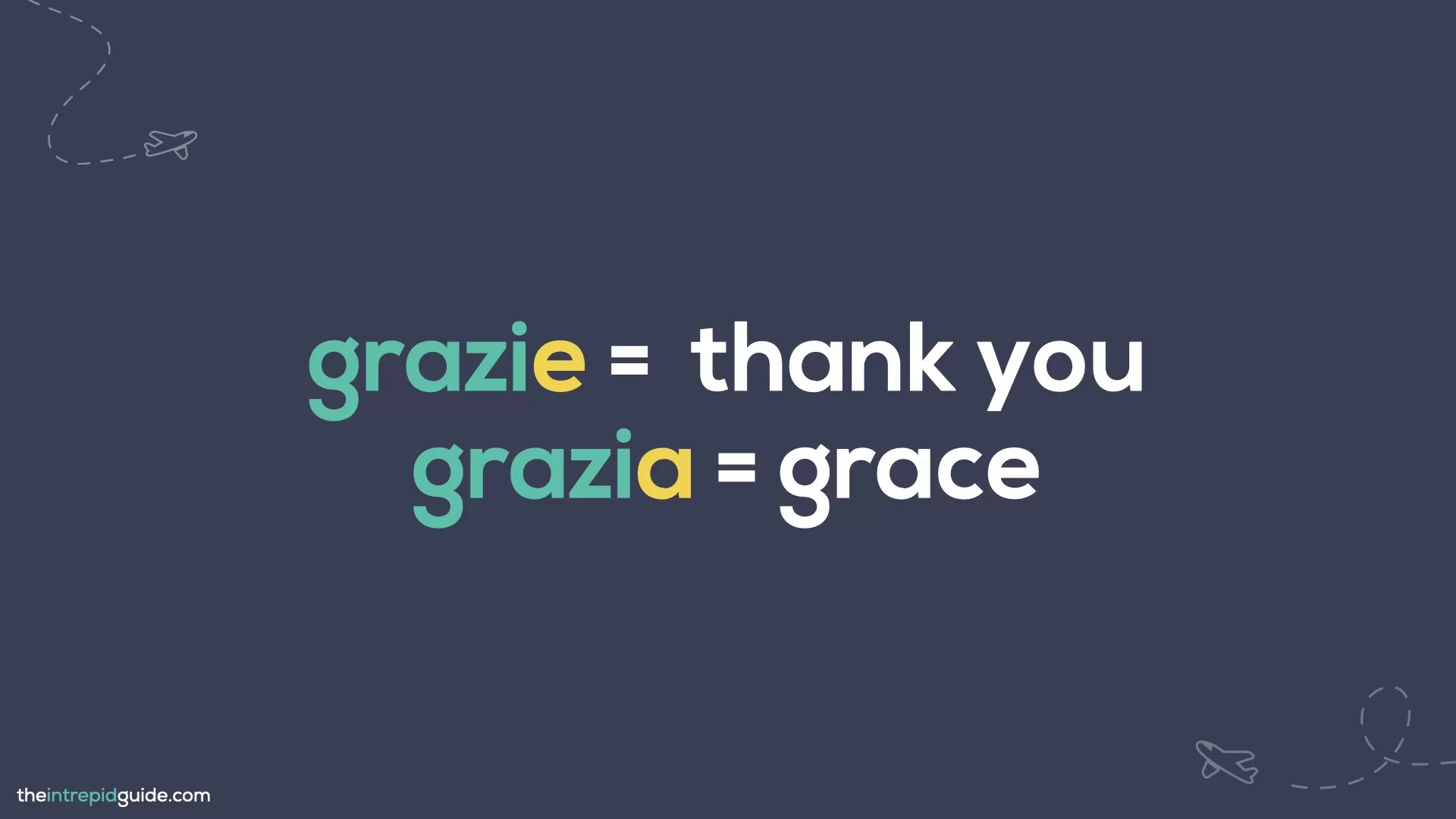
How to say ‘thank you very much’ in Italian
Like a simple ‘thank you’ is not always enough in English, just saying grazie may not be enough in Italian either. To make the expression stronger and express deeper gratitude, you can say ‘thank you very much’ quite a few different ways.
1. Grazie mille / Mille grazie
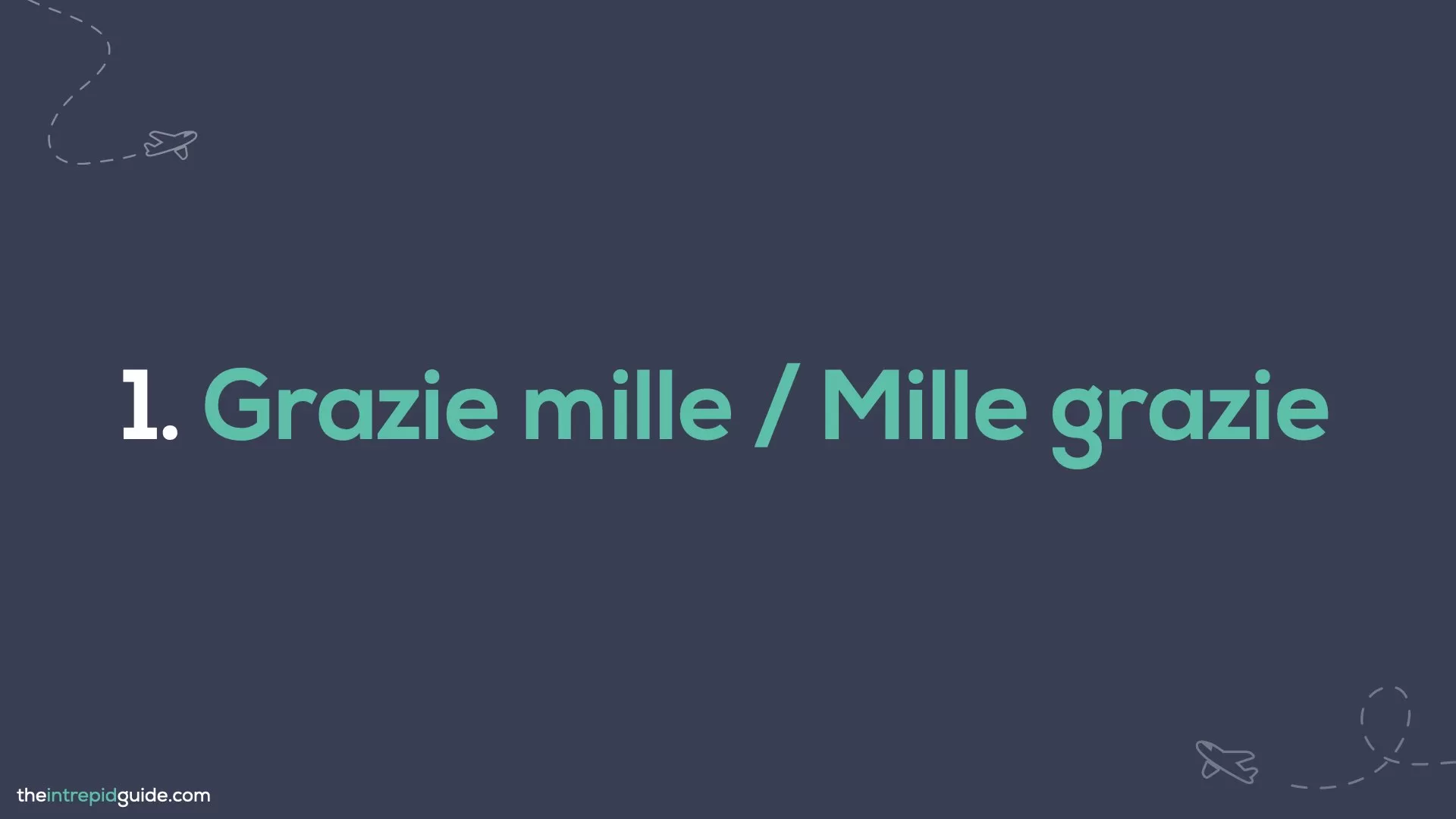 Grazie mille and mille grazie are expressions that literally mean ‘a thousand thanks’ and is the most common way of saying ‘thank you very much’ in Italian. Mille looks like the word million and the equivalent English idiom is in fact ‘thanks a million’. However, mille means ‘thousand’ in Italian.
Grazie mille and mille grazie are expressions that literally mean ‘a thousand thanks’ and is the most common way of saying ‘thank you very much’ in Italian. Mille looks like the word million and the equivalent English idiom is in fact ‘thanks a million’. However, mille means ‘thousand’ in Italian.
Here is an example:
Grazie mille per il vino. Era buonissimo!
Thank you very much for the wine. It was delicious.
Similar to English, it can be said with a sarcastic or irritated tone to express annoyance.
Grazie mille per aver lavato i piatti!
Thank you very much for washing the dishes! (when the dishes clearly remain unwashed)
2. Molte grazie
 Molte grazie literally translates to ‘many thanks’. This expression is a little less emphatic compared to mille grazie and a bit more informal. However, it is still a very popular way of saying ‘thank you very much’ in Italian.
Molte grazie literally translates to ‘many thanks’. This expression is a little less emphatic compared to mille grazie and a bit more informal. However, it is still a very popular way of saying ‘thank you very much’ in Italian.
Here is an example:
Molte grazie per il tuo aiuto.
Thank you very much for your help.
3. Tante grazie
 Tante grazie means ‘thanks a lot’ (tante means ‘many’, or ‘a lot of’ in Italian), and is quite similar to the previous two examples.
Tante grazie means ‘thanks a lot’ (tante means ‘many’, or ‘a lot of’ in Italian), and is quite similar to the previous two examples.
Here is an example:
Tante grazie per la tua lettera!
Thank you very much for your letter!
However, unlike grazie mille, changing the word order, in this case, changes the meaning: grazie tante is used in a sarcastic or ironic way, kind of like saying ‘thanks for nothing’ in English.
Here is an example:
Grazie tante per avermi pestato il piede.
Thanks a lot for stepping on my foot.
4. Grazie infinite
 Is your gratitude ‘infinite’? Then the expression grazie infinite is definitely for you: it literally means ‘infinite thanks’. It is a bit more ‘flowery’ than grazie mille and can sound slightly over the top in a casual chat with family or friends. However, it is a good way to express deep gratitude and strong emotion, so don’t ignore it!
Is your gratitude ‘infinite’? Then the expression grazie infinite is definitely for you: it literally means ‘infinite thanks’. It is a bit more ‘flowery’ than grazie mille and can sound slightly over the top in a casual chat with family or friends. However, it is a good way to express deep gratitude and strong emotion, so don’t ignore it!
Here is an example:
Grazie infinite per avermi aiutato.
Thank you so much for helping me.
5. Grazie di cuore
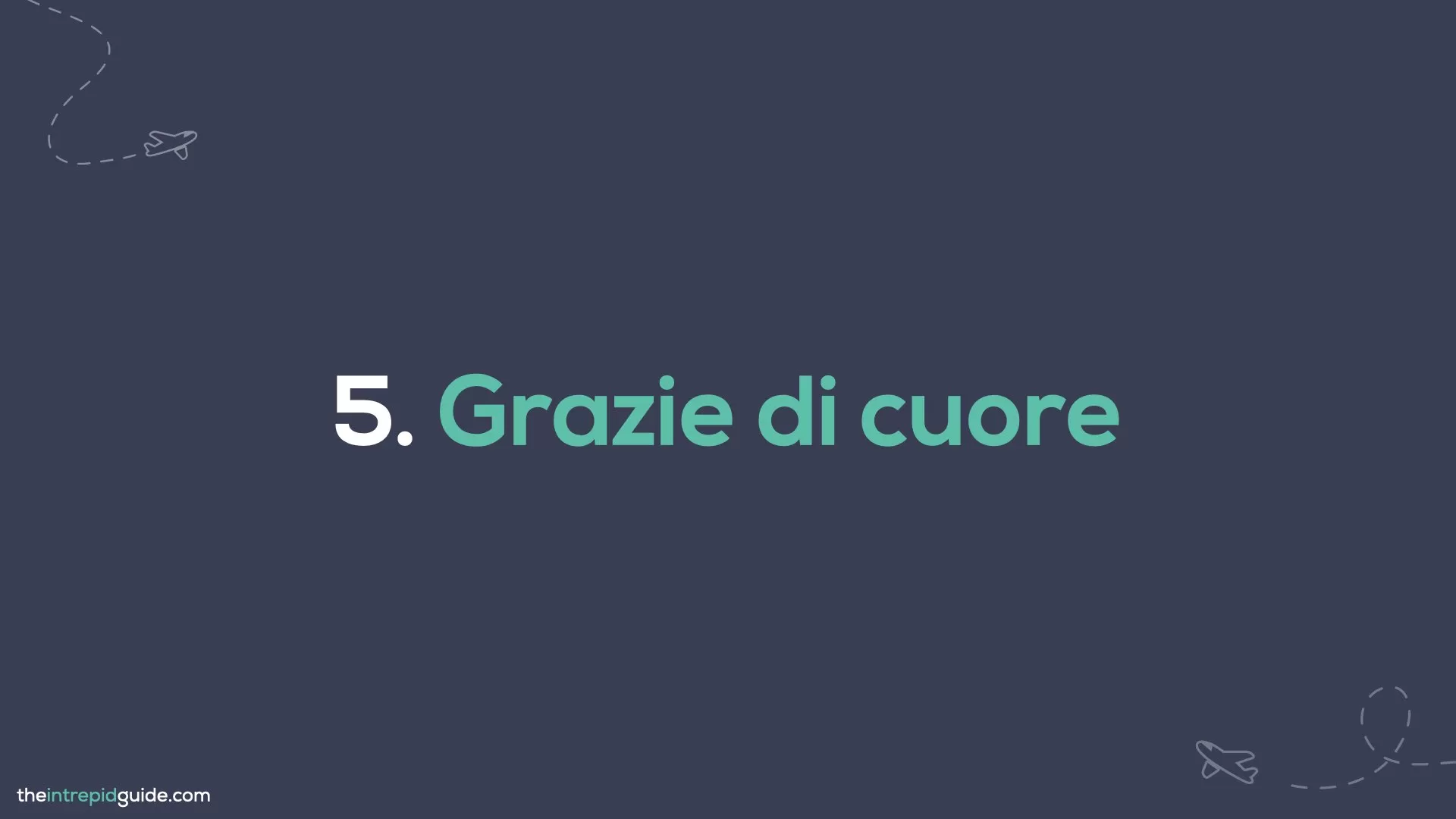 Grazie di cuore is similar to grazie infinite as grazie di cuore is another way to express sincere and emotional gratitude towards someone. It literally means, ‘thanks of the heart’ but means ‘thank you with all my heart’, ‘thank you from the bottom of my heart’ or ‘my heartfelt thanks’.
Grazie di cuore is similar to grazie infinite as grazie di cuore is another way to express sincere and emotional gratitude towards someone. It literally means, ‘thanks of the heart’ but means ‘thank you with all my heart’, ‘thank you from the bottom of my heart’ or ‘my heartfelt thanks’.
Here is an example:
Grazie di cuore per questa bella serata.
My heartfelt thanks for this wonderful evening.
6. Grazie assai
 Depending on the context, ‘assai’ can mean ‘enough’ or ‘very’. The expression ‘Grazie assai’ is more colloquial and is primarily used to say thank you very much in Italian in the southern regions of Italy, such as in Rome, Campania and Sicily.
Depending on the context, ‘assai’ can mean ‘enough’ or ‘very’. The expression ‘Grazie assai’ is more colloquial and is primarily used to say thank you very much in Italian in the southern regions of Italy, such as in Rome, Campania and Sicily.
Here is an example:
Grazie assai per il regalo!
Thanks so much for the present!
7. Grazie davvero
 Translated into English, grazie davvero means something similar to ‘thank you, I really mean it’, and is another way of expressing your sincere gratitude in Italian.
Translated into English, grazie davvero means something similar to ‘thank you, I really mean it’, and is another way of expressing your sincere gratitude in Italian.
Here is an example:
Grazie davvero di essere qui per il nostro matrimonio!
Thank you so much for being here for our wedding!
8. Ti / La / Vi ringrazio tanto!
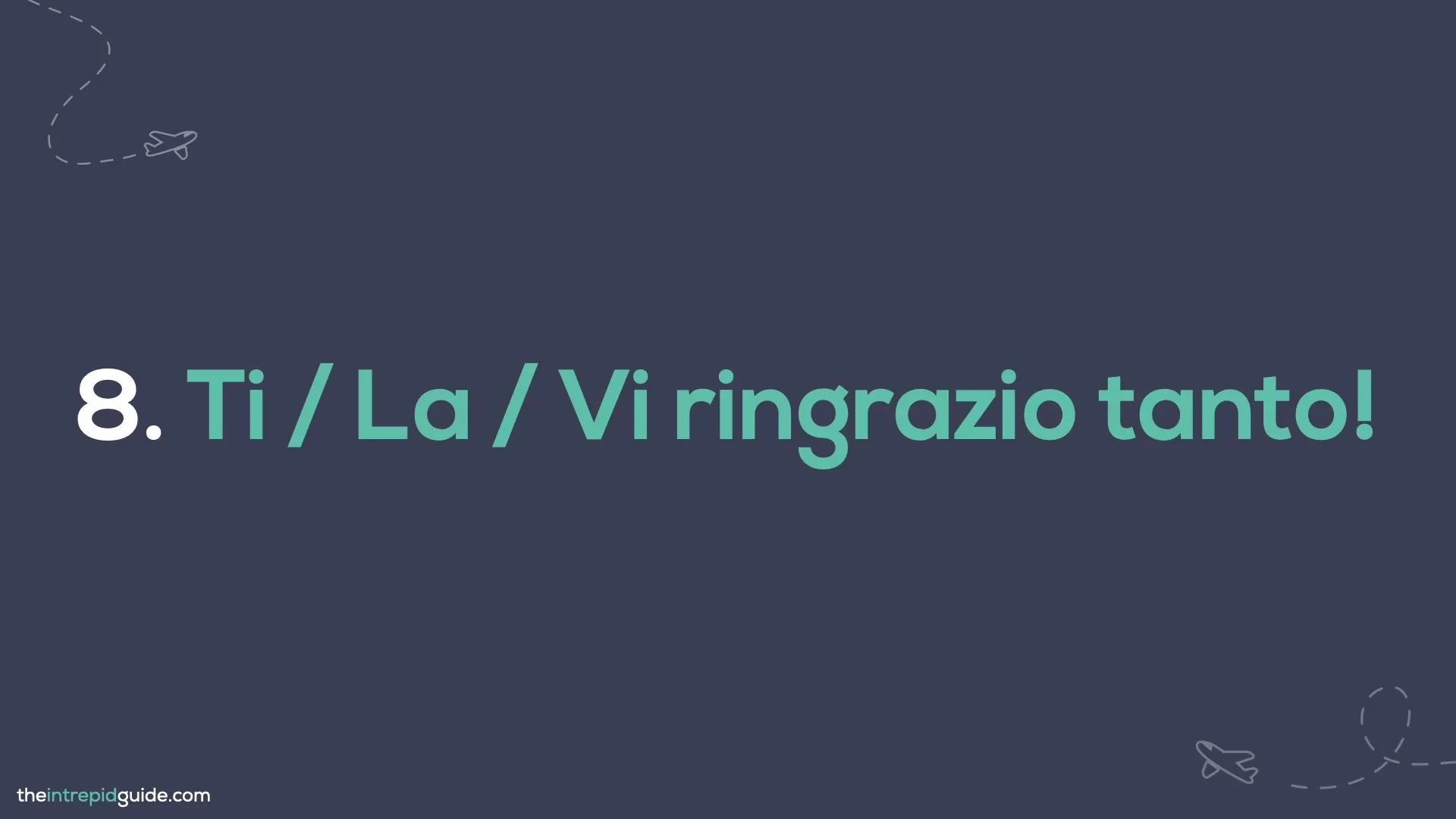 Ringraziare is the Italian verb meaning ‘to thank’ and it is used with a direct object pronoun to specify who we are thanking. Ti is informal singular, La is formal singular, and vi is plural which is used to thank more than one person in both formal and informal situations. To stress even more how grateful you are, you can add tanto or molto (a lot) to the expression.
Ringraziare is the Italian verb meaning ‘to thank’ and it is used with a direct object pronoun to specify who we are thanking. Ti is informal singular, La is formal singular, and vi is plural which is used to thank more than one person in both formal and informal situations. To stress even more how grateful you are, you can add tanto or molto (a lot) to the expression.
Here is an example:
La ringrazio molto per il suo consiglio, signor giudice.
Thank you very much for your advice, Your Honour.
Other ways of saying thank you in Italian
It might seem like you know all the possible ways of how to say thank you in Italian – but this is just the beginning! Italian is a language rich in colourful expressions, and since being polite is so important for Italians, there are a plethora of different ways to express your gratitude.
Here are a few more ways to express your gratitude in the Italian language:
9. I miei ringraziamenti
All my gratitude, My thanks. For example: I miei ringraziamenti vanno al mio team – My thanks go to my team.
10. Porgo i miei più sinceri ringraziamenti.
I offer my sincerest thanks
11. È molto gentile da parte tua
That’s very kind of you.
12. Grazie di tutto
Thank you for everything.
13. Lo apprezzo tanto
I really appreciate it.
14. Grazie dal più profondo del cuore
My deepest thanks / Thanks from the bottom of my heart.
15. Grazie di nuovo
Thanks again.
16. Grazie ancora
Thanks again.
17. Grazie rinnovate
Thanks again. This literally means, renewed thanks.
18. Le sono molto grata/o (formal) / Ti sono molto grata/o (informal).
I’m very grateful to you.
19. Non ho parole per ringraziarti/ringraziarla
I don’t know how to thank you. Literally: I don’t have words to thank you.
20. Grazie un sacco
Sacco literally means ‘bag’ in Italian but it is often also used idiomatically to mean ‘a lot’, so you can use Grazie un sacco to say ‘thanks a lot’ in informal situations. Similar to saying ‘thanks a bunch’, or ‘thanks heaps’.
21. Sei un angelo/tesoro
You’re an angel/treasure. This is a great expression to use with children and loved ones.
22. Ti devo un favore
I owe you a favor.
23. A buon rendere
I owe you one. I’ll return the favour.
24. Hai fatto davvero tanto
You really did a lot for me.
25. Ti facevi davvero in quattro per me
You really went out of your way for me / You really bent over backwards for me
26. Cordialmente grazie.
Cordial thanks / Warm thanks. For example: Signor Presidente, grazie cordialmente per il suo tempo – President, thank you very much for your time.
27. Sinceramente grazie.
Sincere thanks. / Thank you sincerely.
28. La / ti ringrazio in anticipo.
Thank you (formal / informal) in advance. This expression and the two previous ones are commonly used in closing letters in Italian.
Using any of these phrases can help you spice up your Italian and express your gratitude in a variety of unique and original ways. Attenzione! Be careful how you use them as many of the more emotional phrases would sound somewhat silly in a casual setting.
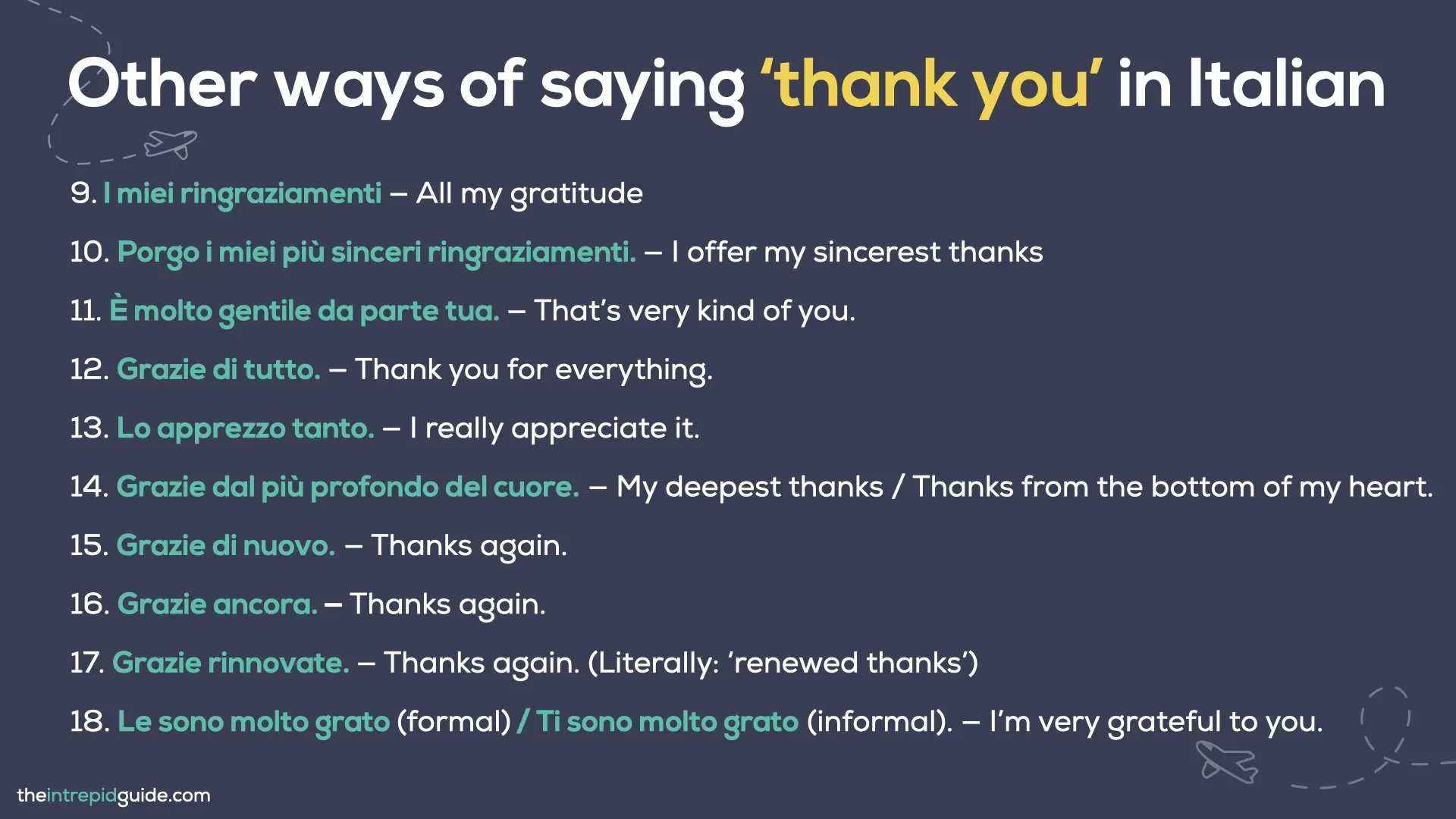
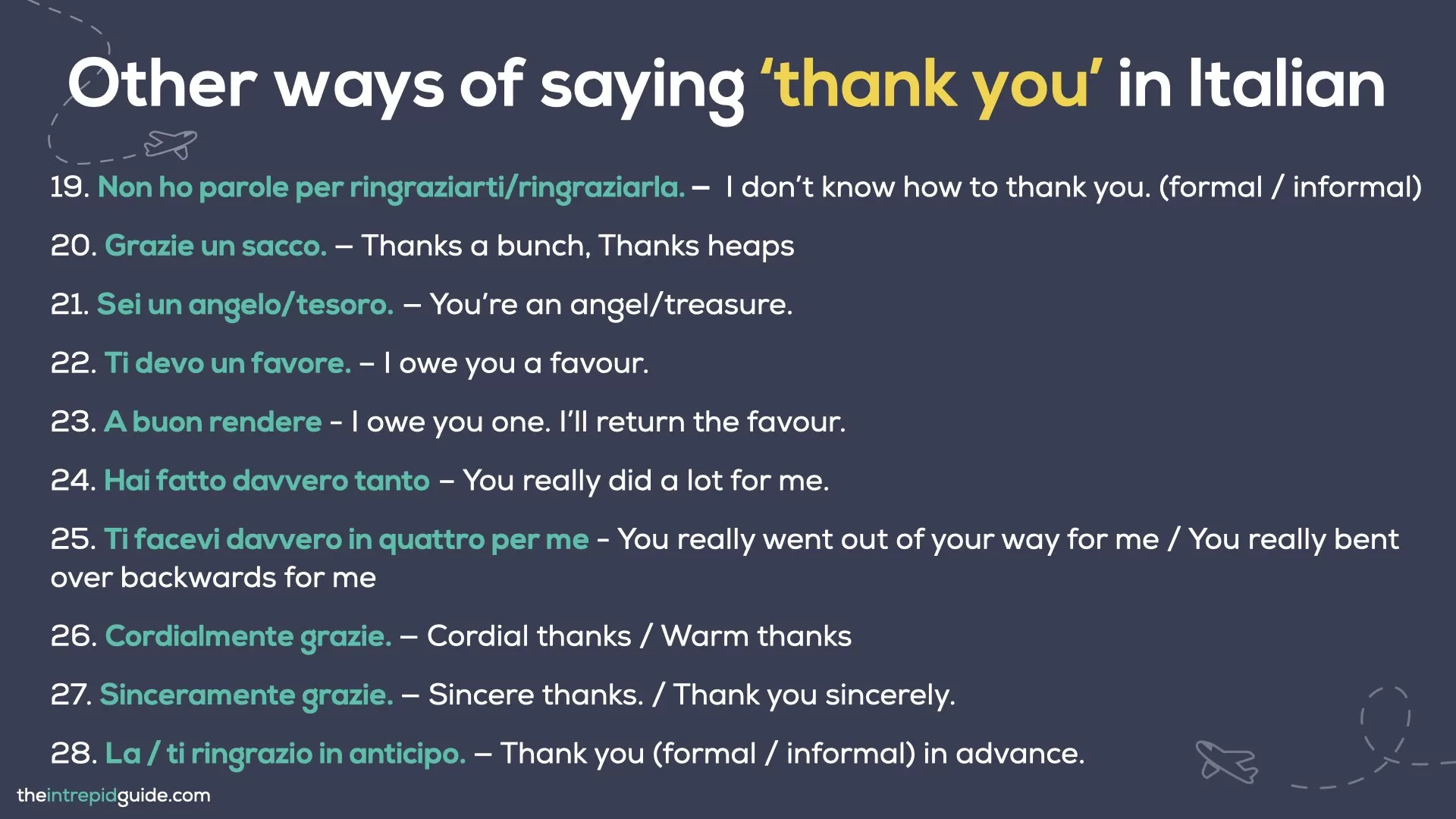
Pronunciation: The importance of ‘e’
The ‘e’ at the end of words is silent in the English language. However, in Italian, it has to be pronounced. For instance, grazie is not pronounced grat-zee or grassi (which means ‘fat’ in Italian, and is not a good way to win people over). It is pronounced GRAHT-see-eh. The ‘e’ at the end of grazie is not stressed and not very loud, but it is there, it sounds like ‘eh’ at the end of the word.
This is important to remember when pronouncing other words as well: mille, infinite, cuore, molte, tante – the ‘e’ at the end of all these words must be pronounced if you want to speak correctly.
Skipping the ‘e’ at the end of words is one of the common mistakes English speakers make when speaking Italian. It’s important to be aware of it and be careful!
Using prepositions after ‘grazie’
Often when you are thanking someone, you’ll want to add what you are thanking them for: for their help or attention, for dinner, for a thoughtful present… There are a few ways to do it, and it’s important to keep the correct grammar in mind.
29. Grazie per/di…
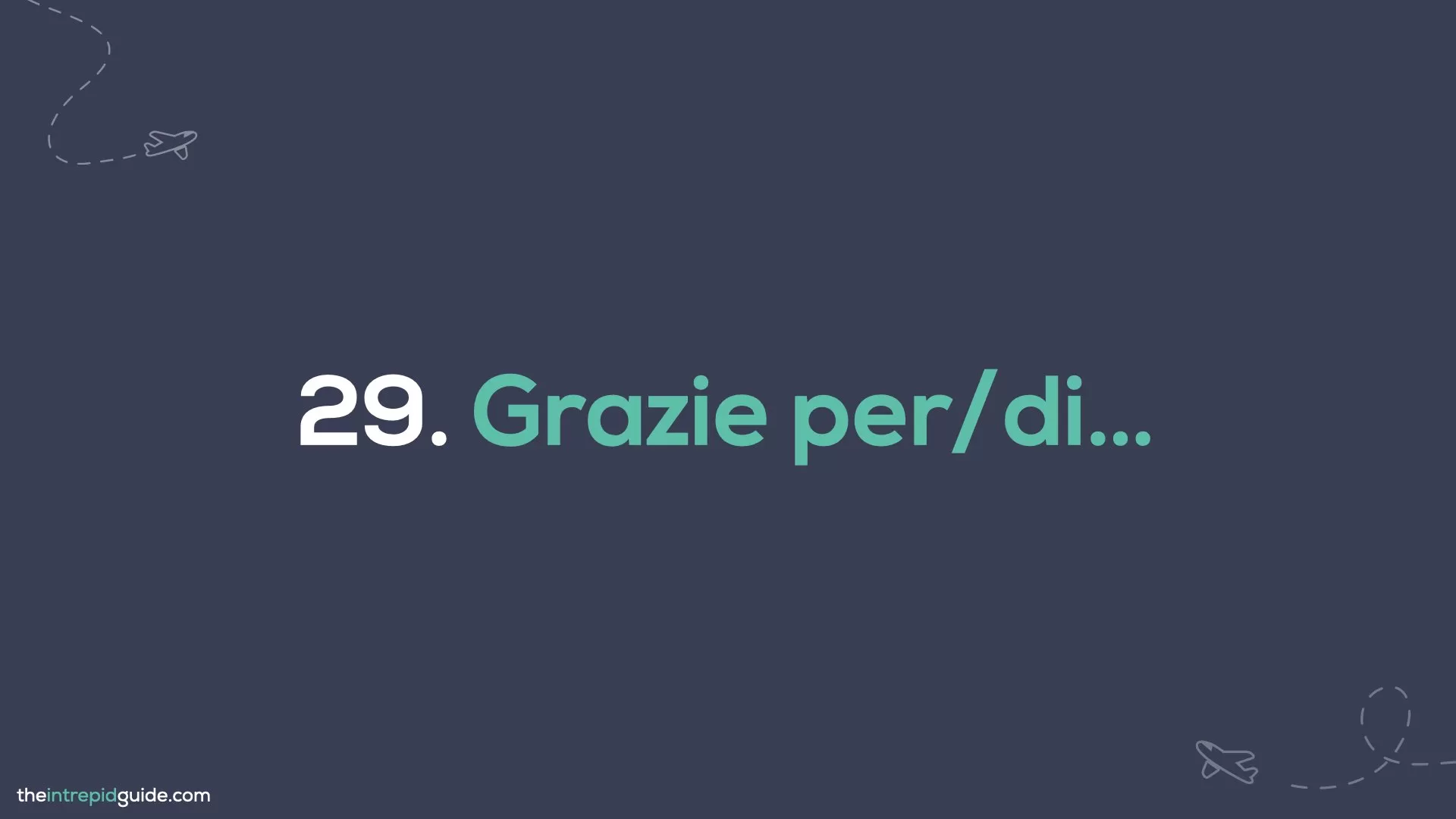
To say ‘thank you for….’ doing something’ we use the following formula:
grazie + di / per + infinitive form of the auxiliary verb (essere or avere) + past participle of the verb.
Here are some examples:
Grazie di aver chiamato.
Thank you for calling.
Grazie per avermi aiutato.
Thank you helping me.
Grazie per essere stato così gentile.
Thank you for being so kind.
Grazie per essere qui oggi.
Thank you for being here today.
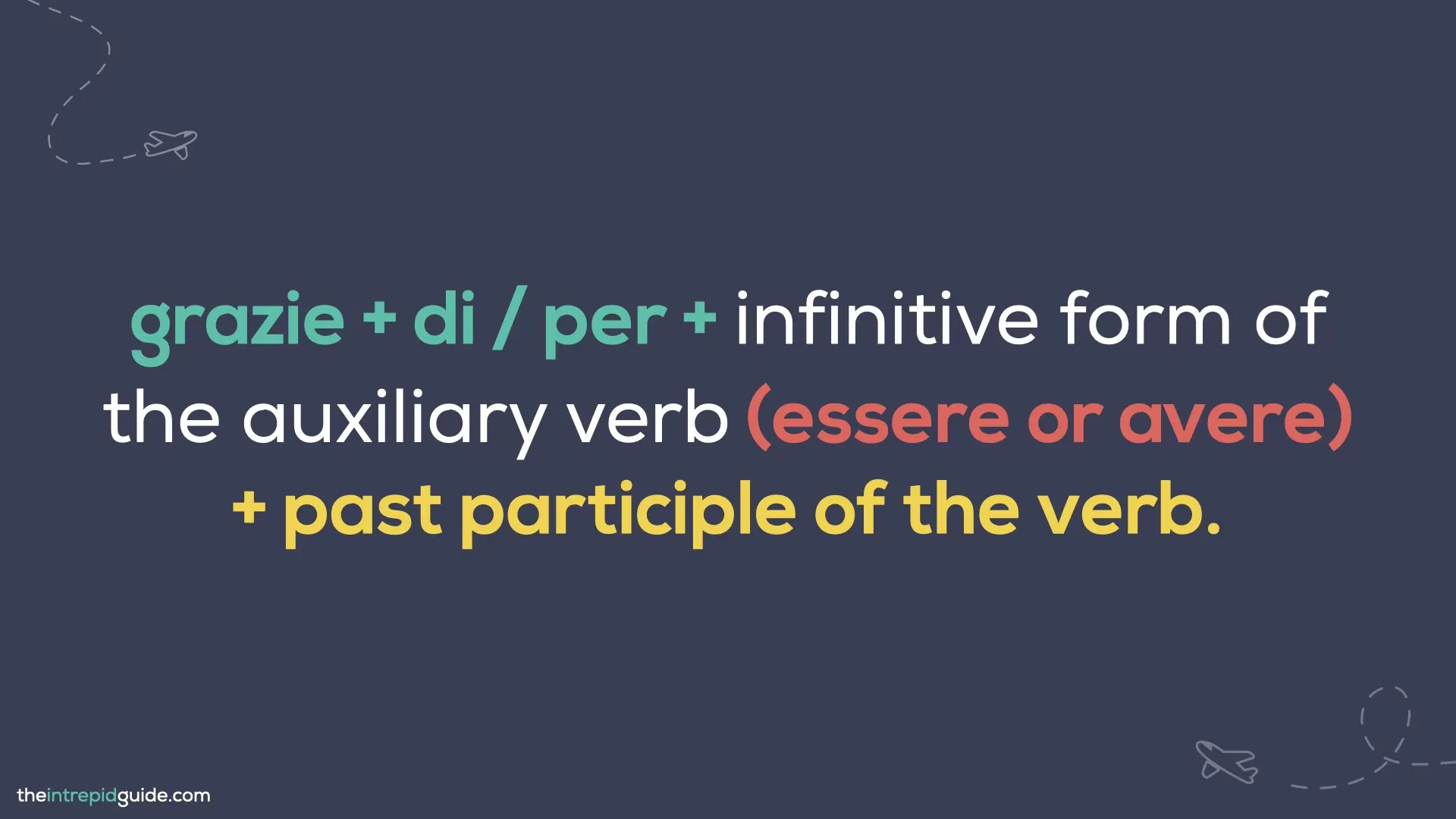
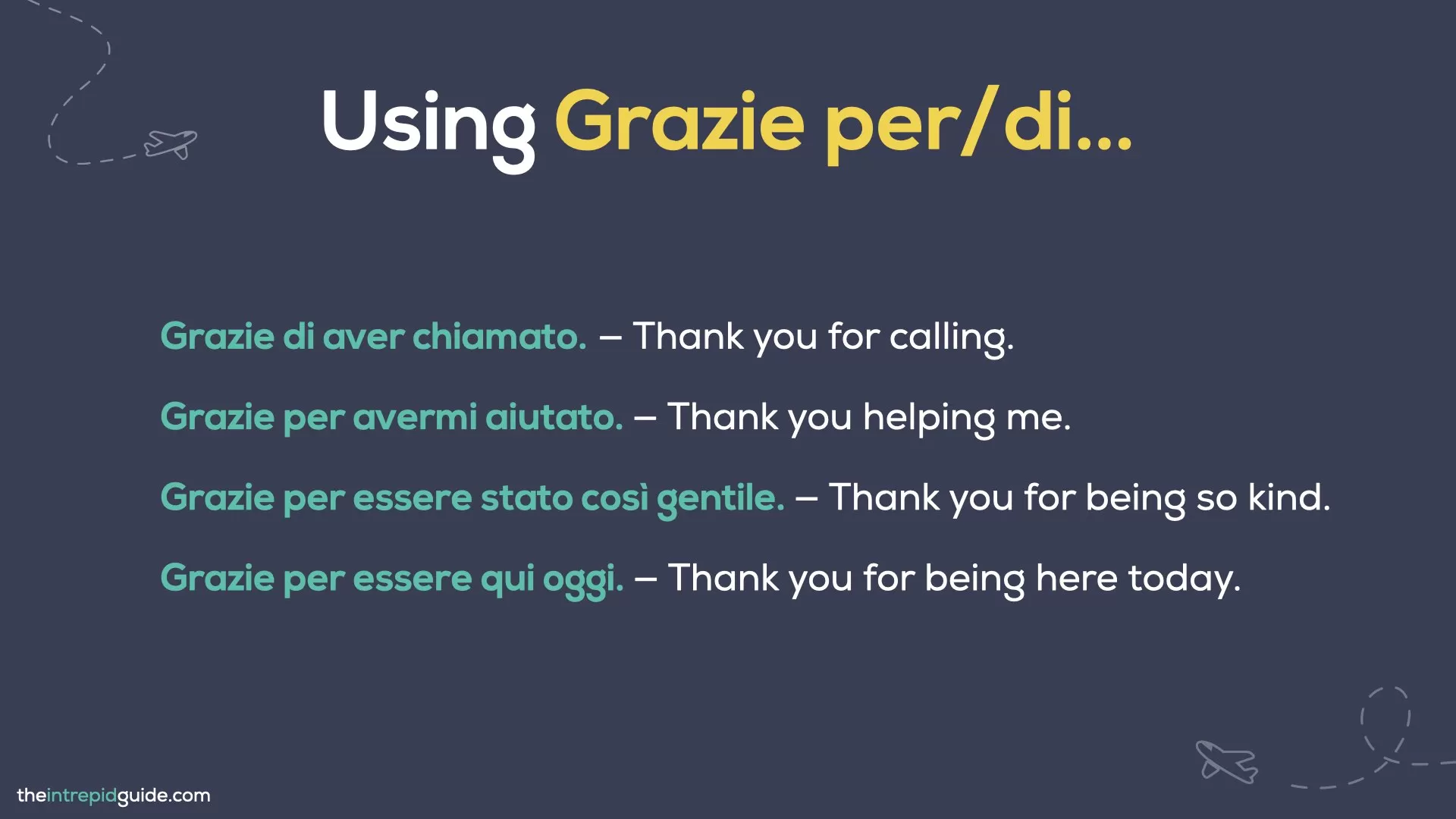 You can also say ‘thank you for something’ with the formula:
You can also say ‘thank you for something’ with the formula:
grazie + di / per + noun
Here are some examples:
Grazie della compagnia.
Thanks for the company
Grazie per il suggerimento
Thanks for the tip
Grazie per il passaggio all’aeroporto.
Thanks for taking me to the airport.
Grazie dell’invito.
Thank you for the invitation.
New to prepositions or need a refresher? Here’s everything you need to know Italian prepositions plus tonnes of examples.
Instead of a simple grazie you can also make these expressions more nuanced by adding mille, molte, and other expressions mentioned earlier.
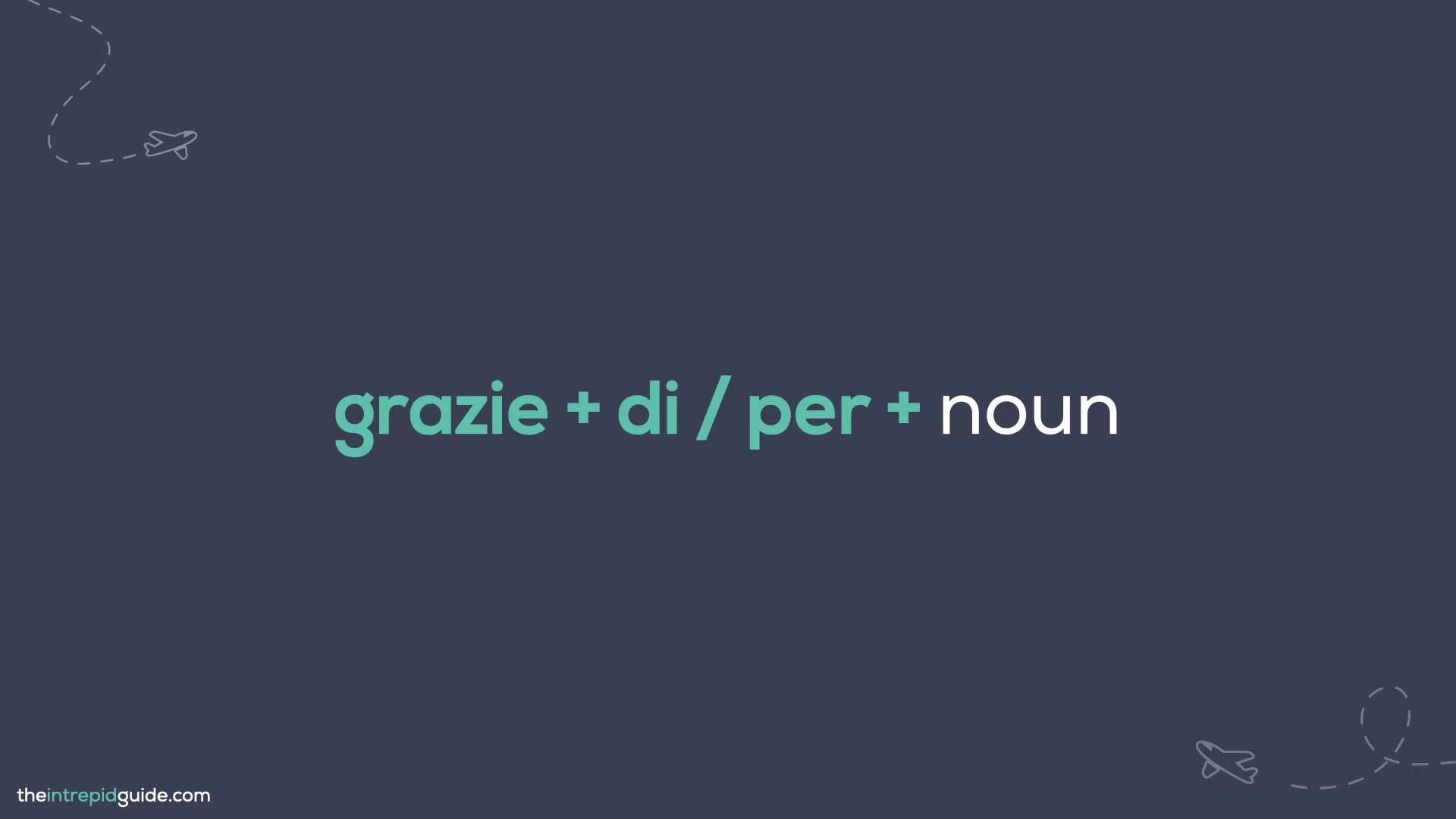
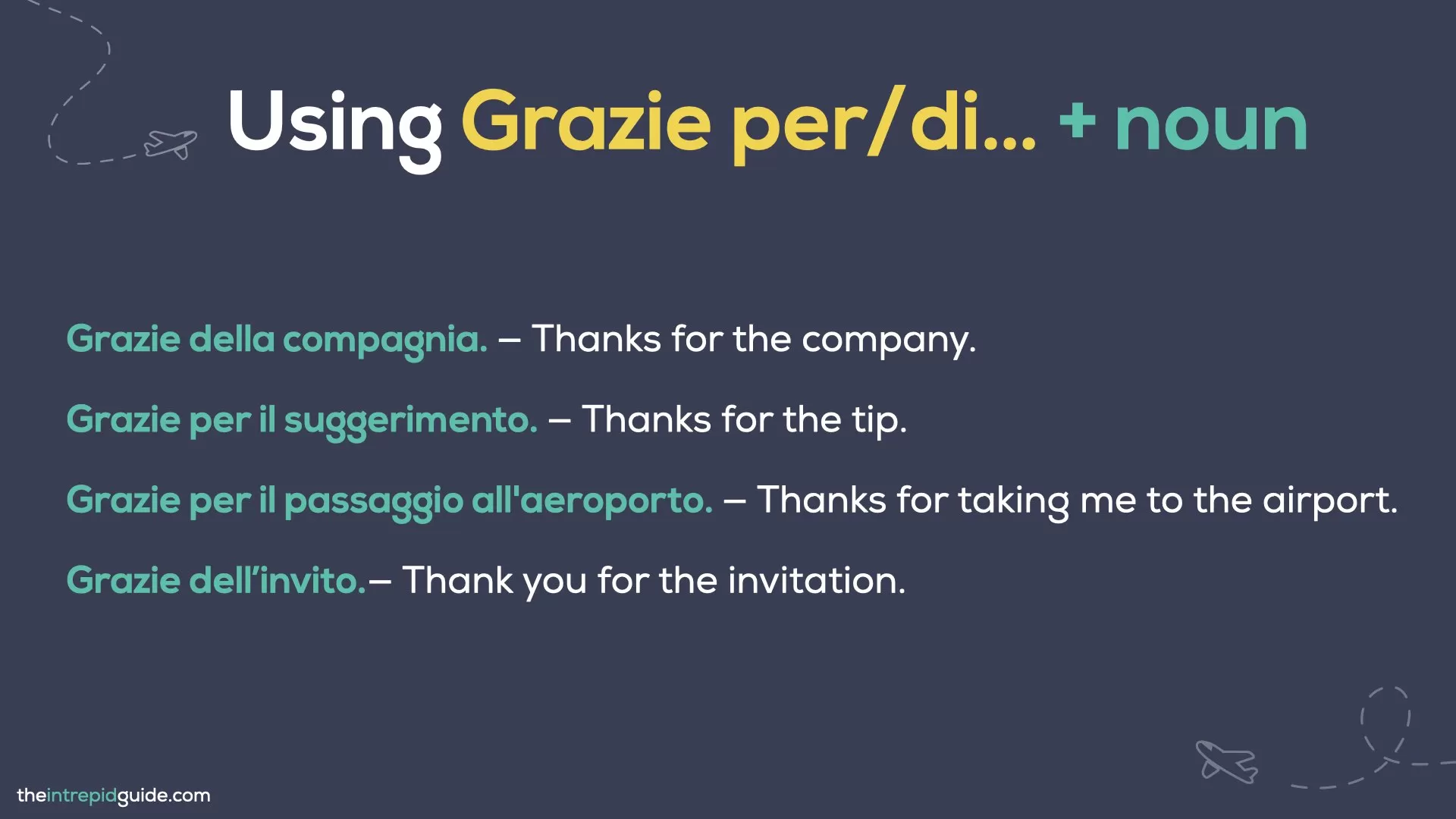 Responding to ‘thank you’ in Italian
Responding to ‘thank you’ in Italian
When someone says thank you to you, it is just as important to respond in order to be polite. Let’s take a look at a few ways of how to respond when someone says thank you to you in Italian.
The easiest and most common way of saying ‘you’re welcome’ in Italian is with prego. Prego is the first person form of the verb pregare and it literally means ‘I pray’. Prego is a short version of saying: ti prego di non ringraziarmi (‘I beg you not to thank me’). Prego can be used to say ‘you are welcome’ to one person or multiple people, in both formal and informal situations – there aren’t any specific connotations attached to it.
Here is an example:
Mi passi la bottiglia di vino, per favore? — Eccotela! — Grazie! — Prego!
Would you pass me the bottle of wine, please? — Here you are! — Thanks! — You’re welcome!
Di niente is used almost as much as ‘prego’ and means ‘it’s nothing’ or ‘no problem’. This expression is usually used in more casual settings. Here are a few other ways of saying ‘it’s nothing’ or ‘no worries’ in Italian:
- Non c’è di che (formal) — best translated as ‘there is no need to thank me’
- Per così poco – Literally: For so little! Meaning, no big deal.
- E / Ma di che! (informal) — Literally: and/but for what!
- Di nulla! (informal) — It’s nothing!
- Figurati! — Don’t mention it!
- Non c’è problems! — No problem!
- Ci mancherebbe! — By all means!
- Non avresti dovuto! / Non dovevi! — You shouldn’t have!
The last two phrases in the list above are popular expressions to use in Italian when you are receiving a gift from someone. They are short for non avresti dovuto comprare niente (‘you shouldn’t have bought anything’) or similar sentences.
Here are some examples:
Grazie per averlo chiesto — Di niente.
Thanks for asking — You’re welcome.
Grazie per il cappuccino! — E di che?
Thank you for the cappuccino. — It’s no big deal.
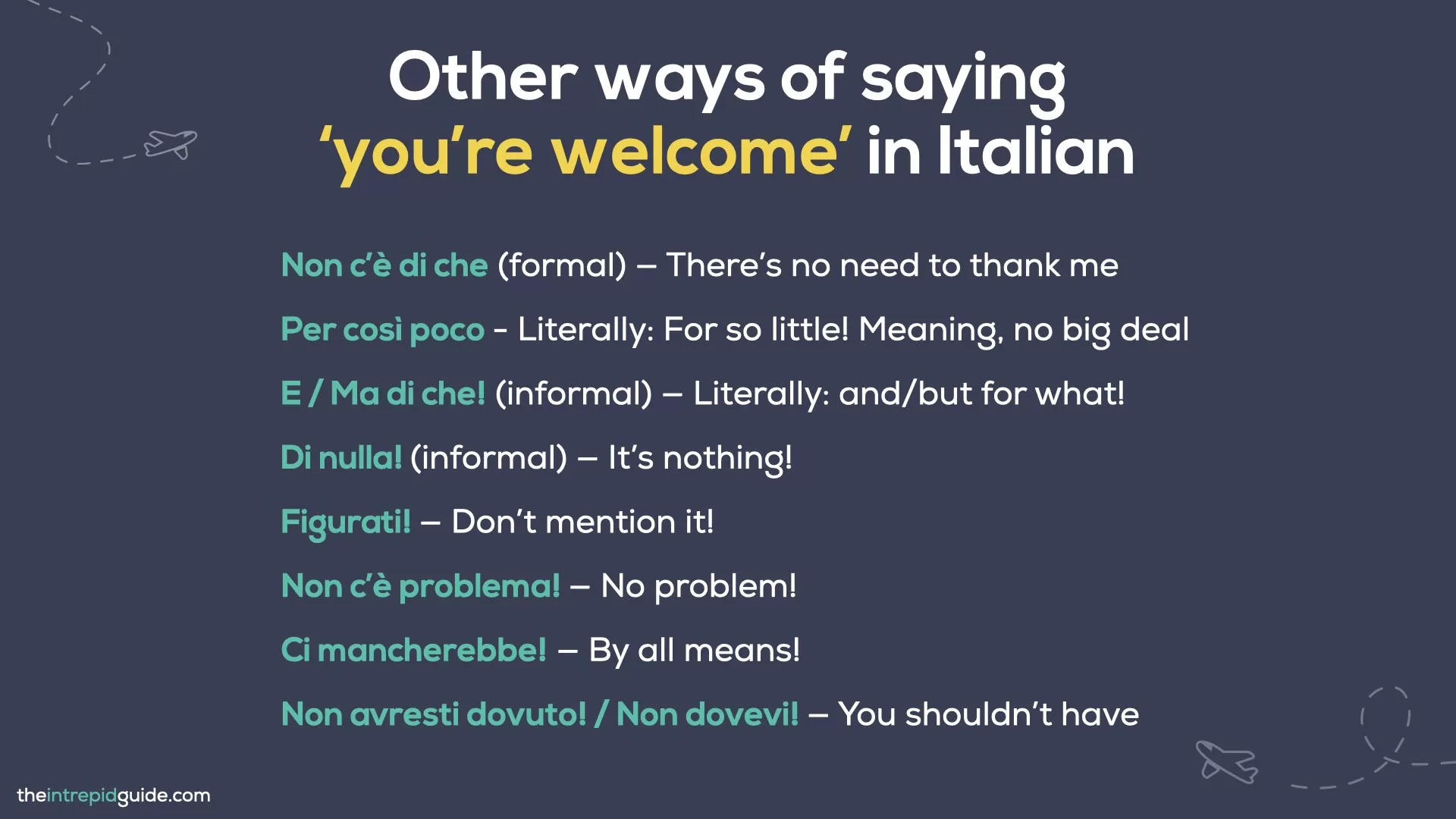
Final thoughts
Taking in so many expressions may be a bit confusing at first – don’t rush, practice them gradually, starting with the simple grazie and adding more nuanced expressions the more confident you get.
Politeness and expressing gratitude are essential in Italian culture, and with the expressions in this article, you are fully equipped to say thank you in Italian practically in any situation imaginable.
Learn conversational Italian FAST! Enrol in my popular Italian course here.
Learn Italian with me, Michele, The Intrepid Guide!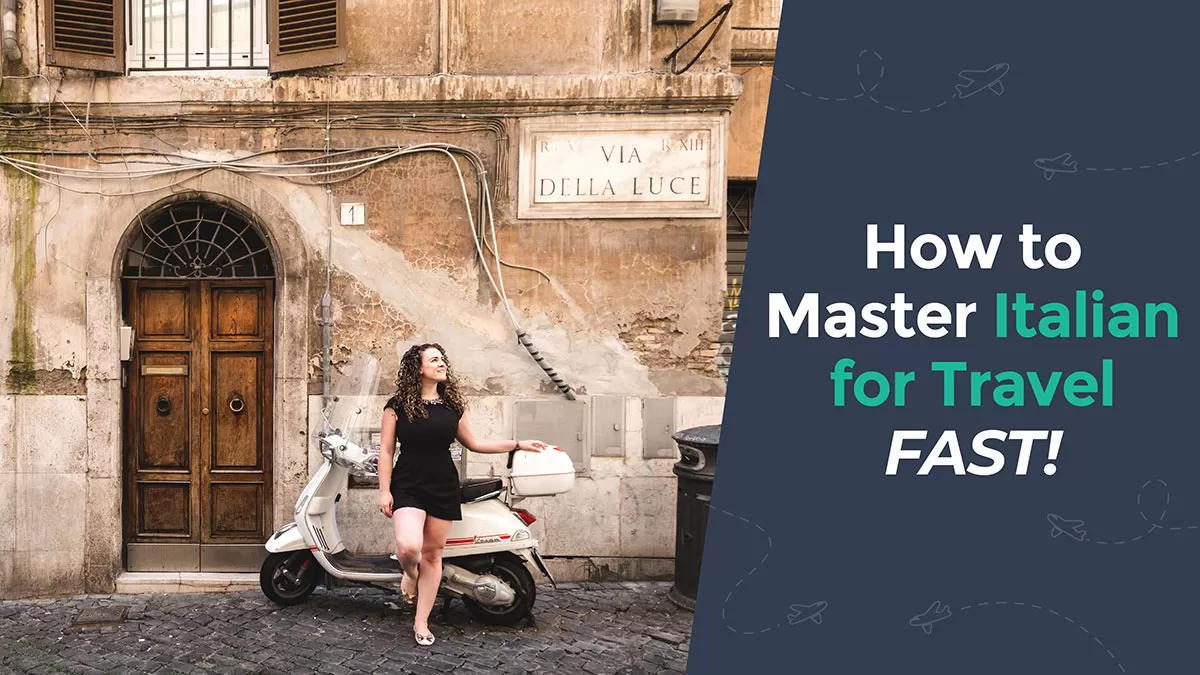
Travelling to Italy? Don’t be treated like a tourist! Live your best travel experiences and learn Italian for less than the cost of eating at a tourist trap restaurant or a taxi driver who has “taken you for a ride”. In addition to my free Italian travel phrase guides, I’ve made it even easier for you to master the Italian language so you can create lifelong memories as you mingle with locals, get local tips, avoid tourist traps, and make new friends. Who knows you, you might even be invited over for afternoon tea by a lovely Sicilian family like I was! Read all about how speaking Italian changed my life and check out The Intrepid Guide Languages courses here.
Here’s what my students are saying:

I really enjoyed the Master Italian for Travel FAST course, it certainly exceeded my expectations. The learning methodology is great, and easy to follow and found that I progressed much faster in the last 4 weeks than I ever did on my own or using other language apps. Grazie mille Michele, I can’t wait until I can put my new skills into action! – Roma Small
Click here for instant access!
Learning Italian? Check out these Italian language guides
- I’m Sorry in Italian | Different Ways to Say Sorry, Excuse me, and Forgive me
- How to say ‘Please’ in Italian in 9 Ways Like a Native
- 10 Ways Natives REALLY Say ‘You’re Welcome’ in Italian
- How to Conjugate Italian Verbs in 3 Simple Steps [Italian for Beginners]
- 41 Italian Greetings: How to Say ‘Hello’ in Italian Like a Local
- Master Days of the Week in Italian (7 Simple Memory Hacks)
- Italian Numbers: How to Count in Italian From 0 to 1 Billion (Audio & PDF Download)
- How to Order Food and Drinks in Italian [Italian for Beginners]
- 125 Most Common Italian Phrases for Travel You’ll Ever Need [PLUS Printable]
- 15 Italian Words You Should NEVER Mispronounce [& How Not To]
- Is Italian Hard to Learn? 7 Common Mistakes & How to Avoid Them
- 11 Effective Hacks That’ll Help You Learn Italian So Much Faster
- Top 14 Italian Words You Should NEVER Say [& What to Use Instead]
- 20 Hilarious Everyday Italian Expressions You Should Use
- Romanesco: 25 Cool Roman Dialect Words You Should Use in Rome
- 10 Reasons Why Learning Italian Will Change Your Life
- 10 Italian Expressions Italians Love Saying
- 10 Italian Phrases That Will Instantly Make You Sound more Italian
- Funny Italian Sayings: 26 Food-Related Insults You Won’t Forget
- 15 Romantic Italian Films That’ll Make You Love Italy Even More
- How to Master Common Italian Phrases for Travel (Like a Local!)
Like it? Pin it for later!
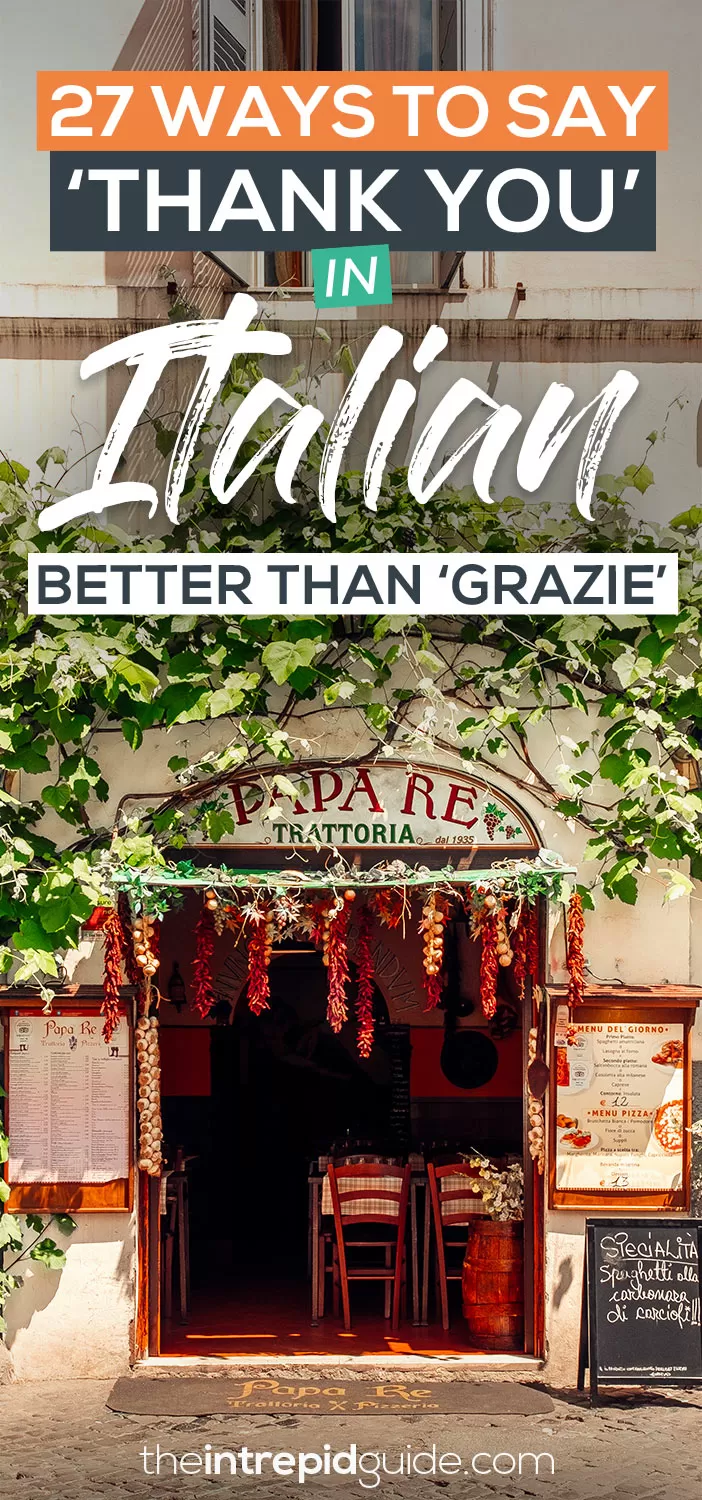
Over to you!
Which of these phrases do you use the most? Which expression will you start using more? Let me know using the comments section below or join me on social media to start a conversation.
Thanks for reading and I hope you enjoyed this post.
Like what you see? Subscribe using the form below to have all of my posts delivered directly to your email.

